The word TOXIC brings up dark images of skulls and bones and generally indicates danger. We are being told that our living environments are becoming increasingly toxic. But what do we mean when we say something is toxic?
Basically anything that is damaging to the well being of life is considered toxic. Poisonous and Venomous are other words that indicate a threat to life. We are generally of the opinion that synthetic chemical compounds are toxic to our body but in fact Nature is replete with chemicals that could be equally toxic to forms of life.
|
|
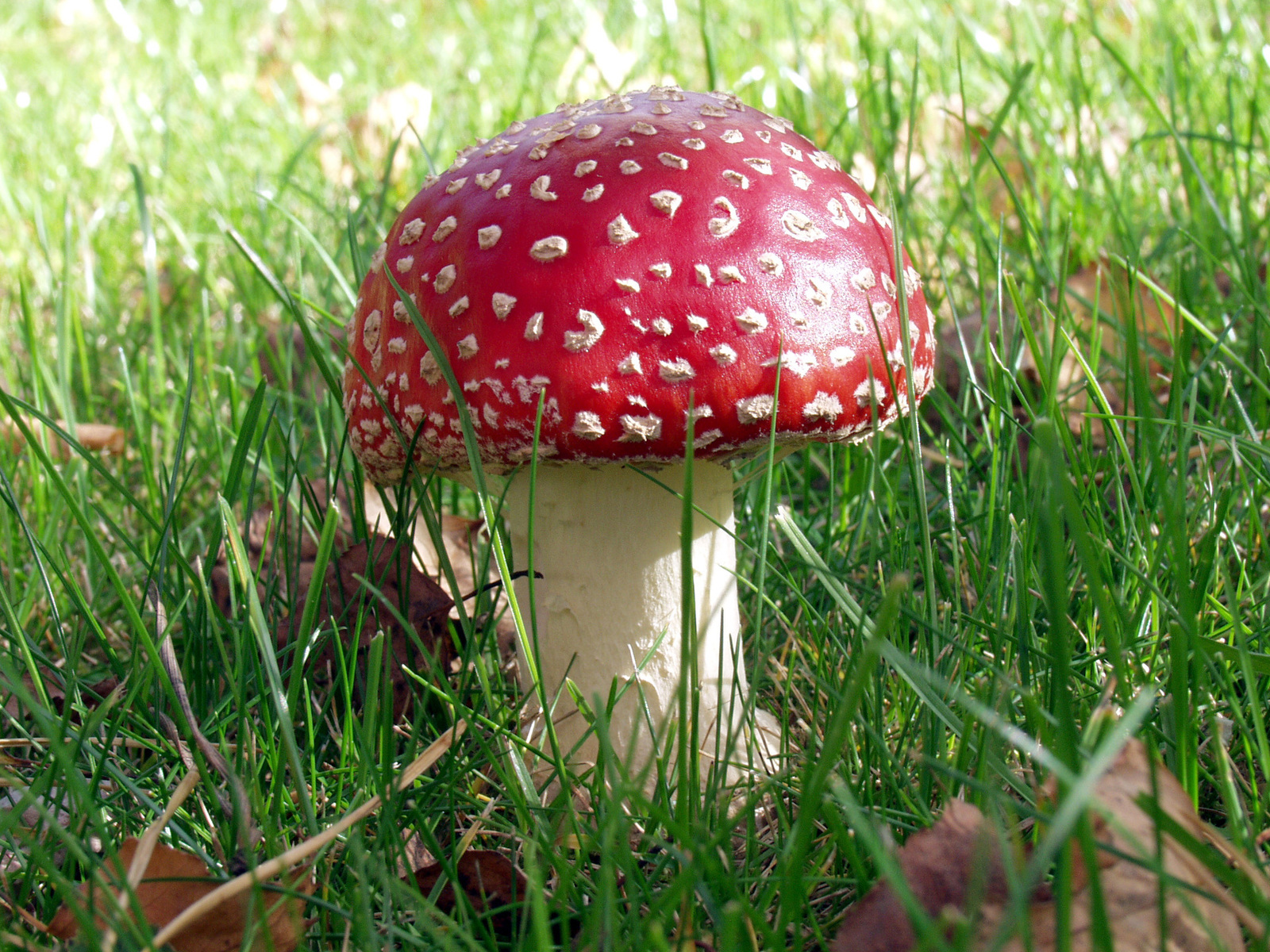
|
|
Toxicity in Nature: There are some 70 to 80 species of mushrooms that are poisonous to humans; many of them contain toxic alkaloids (muscarine, agaricine, phalline). Source : freeimages.com
|
|
|
Whether a chemical occurring in nature is toxic or not, can be determined only on a case to case basis and can never be generalized. Toxic chemicals can be created by humans, synthetically, for example, lead-based paints or pesticides such as DDT. Toxic chemicals can occur naturally too. For example, snake poison is a naturally occurring chemical that harms humans.
|
|
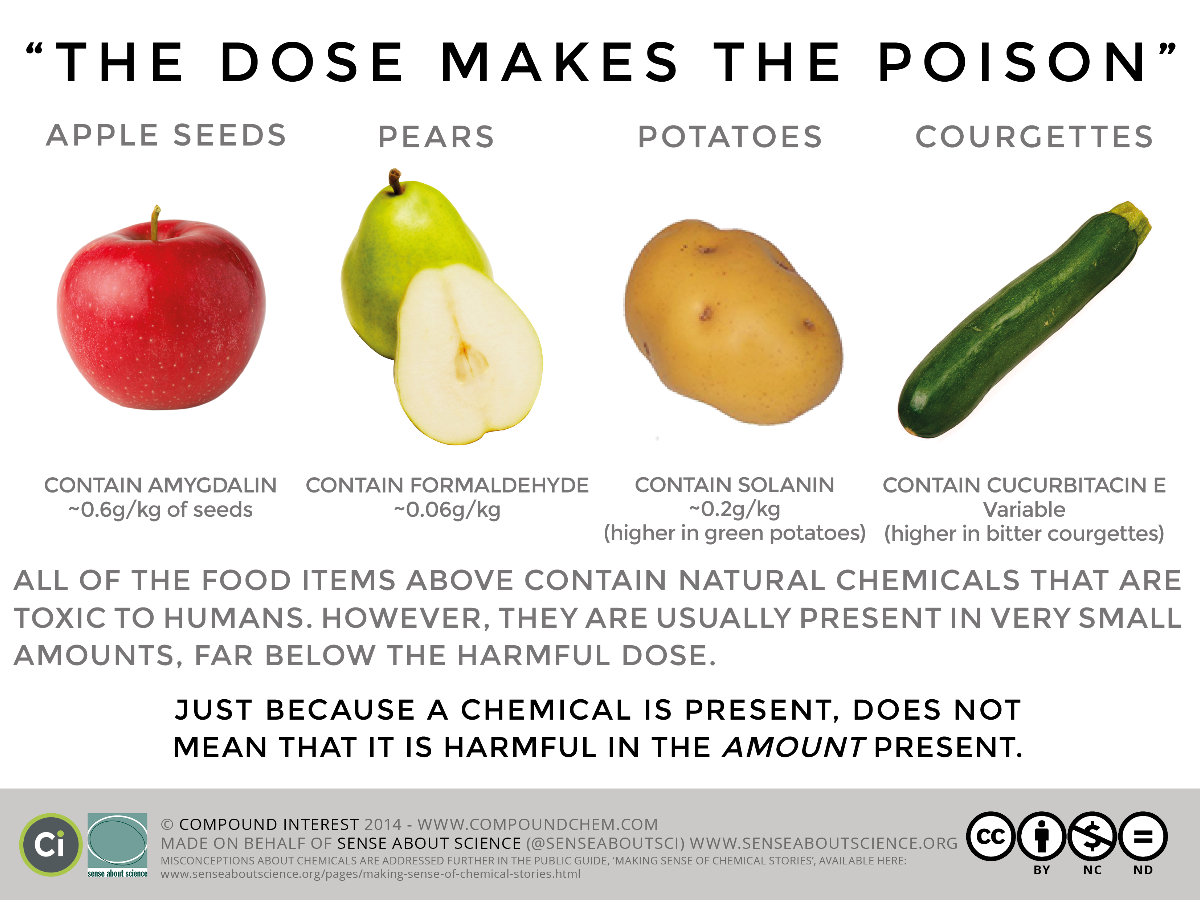
|
|
Source: www.compoundchem.com
|
|
|
The scientific definition of toxicity states that, "Toxicity is the degree to which a chemical substance or a particular mixture of substances can damage an organism. It refers to a chemical’s ability to damage an organ system, disrupt a biochemical process or disturb an enzyme system at some site in the body".
Toxicity is in fact the reaction between a chemical and a living organism - different life forms react differently to different chemicals and therefore, just as, any substance, whether natural or man-made could prove to be toxic to life forms, similarly it could equally prove to be safe.
|
|
|
Factors determining toxicity
|
|
|
How do we determine whether a particular substance is toxic to humans or toxic to the natural environment ?
The toxicity of a substance depends on several factors:
- Chemical structure of the substance.
- The dose in which that substance is administered or ingested by the organism.
- Extent to which the substance is absorbed by the living organism.
- Organism's ability to detoxify the substance and its final elimination from the body.
- The impact on the collective ecosystem , beyond the individual impact.
- The time scale over which this toxic impact is evident and proven.
Toxicity is dose dependent. It could be as simple as understanding that drinking 2 litres of water daily is great for our body metabolism but if we drink water continuously for an hour then it could becomes a poison for us. In severe cases, this kind of poisoning causes convulsions and seizures.
|
|
|
There are many products that we use everyday which contain many types of chemicals that are dangerous for our health. Products like processed food, toothpaste, furniture, food wrap, cosmetics, cookware, cans, carpets, all contain chemicals like organophosphates, flame retardants, phthalates and many other chemicals that may be carcinogenic or disrupting our hormonal balance thus turning them into toxic products. Do you know which products you use on a daily basis may be toxic to your body?
|
|
|
Paints
Paints contain lead. Lead is a toxic heavy metal. And exposing ourselves to longer time it causes headache, abdominal pain and nausea.
Electrical Equipments and Lubricants
Electronic appliances contain Polychlorinated Biphenyls (PCB). PCB's are carcinogenic. It causes immune problems and skin problems and also affect behaviour.
Toothpaste
Flouride and Triclosan are the main ingredient in toothpaste. Continuos and excessive exposure to flouride causes headache, nausea and other health problems.
Perfumes and air freshners
These contain formaldehyde which is again a potent carcinogen and causes many other health problems.
Cosmetics, soaps, toiletries, healthcare products
All these products contain phthalates. Phthalates are associated with diabetes, asthma, fertility issues and is also a potent carcinogen.
|
|
|
Source: freeimages.com Source: recycle-more.co.uk
|
|
|
There are many other commonly used products which contain toxic chemicals like processed foods, pesticides, teflon coated non stick cookware,batteries,thermometers, alcohol,cigarettes, fireworks, explosives etc. whose use needs to be moderated as over exposure to these products could lead to severe health problems as all these products contain toxic chemicals.
|
|

|
Lead is often an ingredient in chemical paints and the accumulation of lead in the body can lead to neurological disorders. Source: goodhousekeeping.com
|
|
|
Degree and impact of toxins
|
|
|
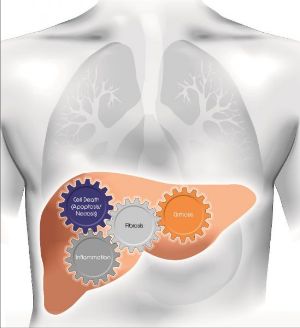
|
|
Symptoms that indicate toxicity in the body include inflammation, cell death, fibrosis or cirrhosis. Source:https://diapharma.com
|
|
|
The degree and impact of toxins is governed by several factors:
1. Routes of entry to the human body:
- Inhalation (breathing)
- Absorption (skin contact)
- Ingestion (eating)
- Injection
2. Dose response relationship:
The amount or dose of a chemical entering the body for a certain period of time is probably the most important factor which determines whether a chemical will cause poisoning and be toxic to the human body.
3. Removal from the body:
Chemicals which enter the body are eliminated from the body. Some chemicals break down into less toxic substances whereas some substances become more harmful than it was at the initial entry point. Some remain in the body unchanged.
Although most chemicals and their breakdown products are removed as waste in the feces, urine, sweat or exhaled breath.
4. Biological variation:
Different individuals will respond differently to toxic substances. This is determined by age, sex, metabolic and physiological characteristics of the body.
|
|
|
Toxicity as a result of scale
|
|
|
|
The environment today is enveloped with toxins. Be it due to industrialization, pesticides in agriculture or economic development, toxins are present in the air, water, soil and in our entire environment.
|
|
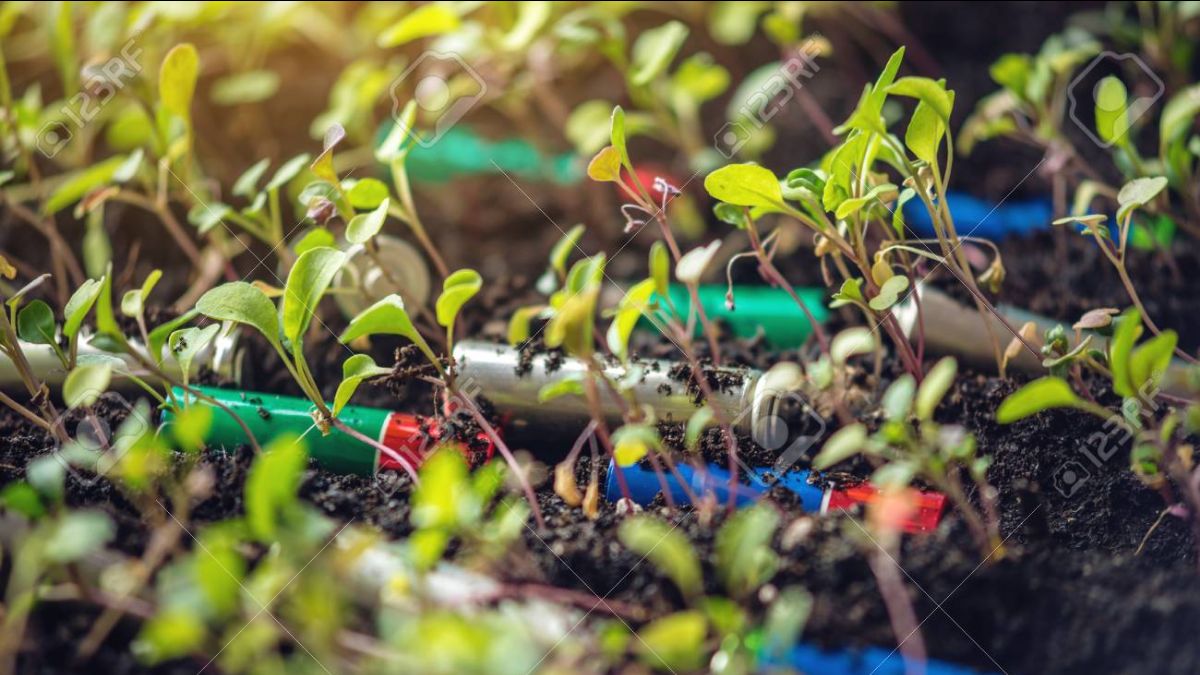
|
Incorrect disposal of used lithium batteries result in them being thrown into the landscape. Toxic chemicals may leach out of these into the soil and affect plants.
Source:freeimages.com
|
|
Beyond the impact that these toxins have on human life, they are also severely affecting other life forms . Drugs that are promoted by the pharmaceutical industry, may give short term benefits to their users however they have more long term damaging impacts on the ecosystem. A drug called diclofenac affected vulture populations who were feeding on carcasses of cattle that had been administered this drug.
( Read more about the vulture crisis)
The pharmaceutical industry tests the drugs they develop in animals. Animal testing causes severe suffering and pain to animals who are bred simply to be tested upon. These animals may live all their lives in a lab being constantly tested with chemicals.
|
|
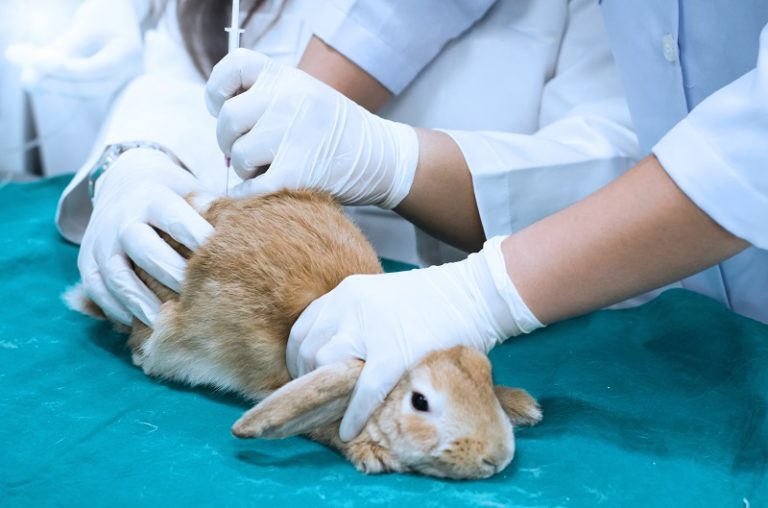
|
|
Source: https://invitrointl.com
|
|
|
Eliminating toxicity from our life
|
|
|
|
So how do we ensure that our life is free of toxins?
There are steps we can take as an individual, changes within our reach and then there are steps we need to take collectively as citizens to ensure our human society is not creating toxic environments. Some of the small, yet vital steps that can help us lessen the exposure to the toxicity around us;
- Become a conscious consumer
Take the time to understand the ingredients in the products you use. Ask questions about them and look them up on the internet to see what reviews they have been given by others in terms of their environmental impact.
Observe closely in your own life what impacts chemicals have. For eg. if you choose to do pest control for cockroaches, and you have pets in the home, watch how your pets react to the pesticide. Or, when you use non stick cookware, observe if they affect your digestion.
- Using moderate quantities if and when required, thus avoiding over exposure and reducing the dose.
When you discover the negative impacts of toxins, try to minimise the use of these and look for natural alternatives. Chemical cleaning agents are now being replaced by materials such as lemon juice and wood ash.
- Going back to old traditional ways of life.
Go back to a time before chemicals were invented and look for the natural materials they used. Some of these practices are as valid today as they were then and in rural India we would still find people following them.
Study and participate in debates around the toxicity caused by industry and engage in citizens movements to demand stricter regulations around toxic chemicals. Let us all play our part in creating a healthier environment.
|
|
|
|